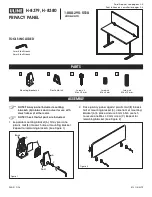
BT-720 Operation manual
P/N:720-ENG-OPM-ENG-R03
Bistos Co., Ltd.
2020.10
10
-
Estimation of cardiovascular risk
-
Determining for the risk of various medical procedure
-
Figuring out whether a patient is clinically deteriorating or is at risk.
Contraindications
-
Oscillometric blood pressure devices may not be accurate in patients with weak or
thready pulse
-
In patients with heart beats below 50 beats/minutes, even if the rhythm is regular,
some of the semi-automatic devices are unable to reduce their deflation rate
sufficiently so that too rapid a falling in cuff pressure results in underestimation of
systolic blood pressure and overestimation of diastolic blood pressure.
-
Do not apply to limb with AV fistula, significant injury or burn, or lymph node
removal post mastectomy.
Source: [1] NHS. “
Clinical Procedure_ Procedure for Blood Pressure Monitoring
”. Wirral
Community NHS Trust. Dec, 2013
[2] Clinical Quality& Patient Safety Unit, QAS.
Clinical Practice Procedures:
Assessment/Non-invasive blood pressure
. Queensland Government, 2016.
https://www.ambulance.qld.gov.au/clinical.html
1.2 Operating principle
Refer to the chapters for every physiological parameter from chapter 5 to chapter 6.
1.3 System configurations
Basic configuration of BT-720
•
Main body with 4.3” touch screen and built-in lithium-ion battery
•
Adult SpO2 probe and extension cable
•
AC/DC adapter
Options of BT-720
•
Non-invasive blood pressure cuff
Picture
Name
Description
Qty
Adult SpO2 sensor
(standard)
SpO2 sensor for adult
1ea
SpO
2
extension cord
(Standard)
Cord to connect the SpO2 sensor
and main body
1ea
Adult NIBP cuff
(Option)
Measures NIBP for adult
1ea
NIBP extension tube
(Option)
Tube to connect the NIBP cuff and
main body
1ea
Adapter
(Standard)
For power supply
1ea












































